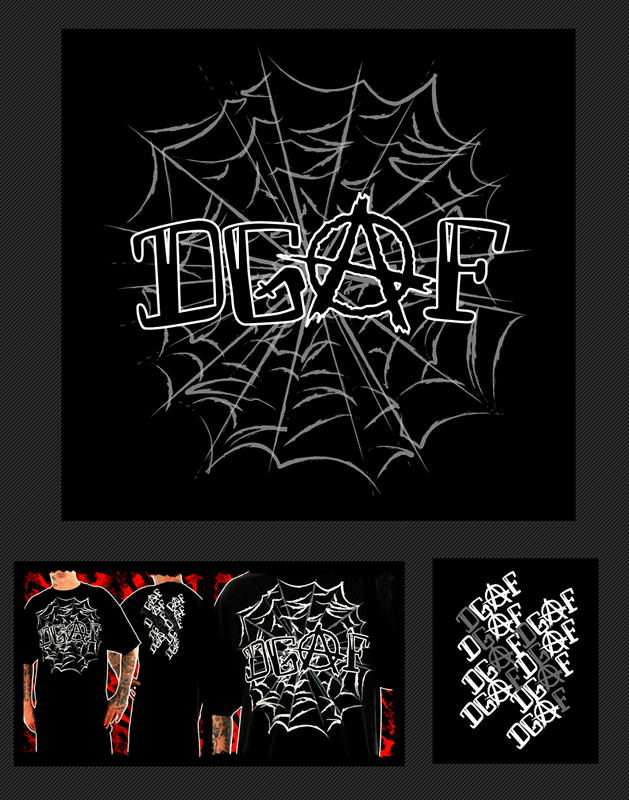In today's fast-paced world, the term "DGAF" has become increasingly popular. DGAF stands for "Don't Give a F*ck," representing a mindset that emphasizes freedom, self-expression, and living life on one's own terms. While it may sound controversial, DGAF has evolved into a cultural phenomenon that resonates with millions worldwide. In this article, we will explore the meaning, history, and implications of DGAF in modern society.
As people face mounting pressures from social expectations, work, and personal relationships, DGAF offers an alternative perspective. It encourages individuals to prioritize their well-being, focus on what truly matters, and let go of unnecessary stress. However, like any lifestyle, it comes with its pros and cons, which we will discuss in detail below.
This article aims to provide a comprehensive understanding of DGAF, covering its origins, applications, and potential effects on mental health, relationships, and productivity. Whether you're curious about the trend or considering adopting the DGAF mindset, this guide will help you make informed decisions.
Read also:Hdhub4u Movie Watch Online The Ultimate Guide For Streaming Enthusiasts
Table of Contents
- What Does DGAF Mean?
- The Origin and Evolution of DGAF
- The DGAF Mindset and Its Principles
- Benefits of Living the DGAF Lifestyle
- Challenges and Potential Pitfalls
- DGAF and Mental Health
- Impact on Relationships
- DGAF in the Workplace
- Real-Life Examples of DGAF in Action
- Conclusion: Embracing DGAF Responsibly
What Does DGAF Mean?
DGAF, an acronym for "Don't Give a F*ck," represents a philosophy that encourages individuals to stop worrying about trivial matters and focus on what truly matters. This mindset is rooted in the idea of prioritizing one's happiness, mental health, and personal values over societal expectations. While the term may sound harsh, it is often used as a way to express defiance against unnecessary stress and external pressures.
According to a study by the American Psychological Association, stress levels have been steadily increasing over the past decade, with work, finances, and social media being major contributors. DGAF offers a counter-narrative to this trend by promoting self-care, authenticity, and inner peace. However, it is essential to strike a balance between letting go of unnecessary burdens and maintaining responsibility in one's life.
The Origin and Evolution of DGAF
The concept of DGAF has its roots in various philosophical and cultural movements, including stoicism, minimalism, and the counterculture of the 1960s. The phrase itself gained widespread popularity in the digital age, thanks to social media platforms like Twitter, Instagram, and TikTok. Influencers and thought leaders have played a significant role in spreading the DGAF mindset, making it accessible to a global audience.
Historical Context
In the early 2010s, DGAF began to emerge as a response to the growing pressure of maintaining a perfect online persona. Social media platforms often emphasize curated lifestyles, leading to feelings of inadequacy and anxiety among users. DGAF offered a way to break free from these expectations and embrace imperfection. Over time, the term evolved to encompass a broader range of applications, from career decisions to personal relationships.
The DGAF Mindset and Its Principles
At its core, the DGAF mindset revolves around three key principles: authenticity, detachment, and prioritization. These principles guide individuals in making decisions that align with their values and goals while minimizing unnecessary stress.
- Authenticity: Being true to oneself and expressing one's genuine thoughts and feelings.
- Detachment: Letting go of things that do not serve one's well-being or happiness.
- Prioritization: Focusing on what truly matters and eliminating distractions.
By embracing these principles, individuals can cultivate a more fulfilling and balanced life. However, it is important to note that DGAF does not advocate for recklessness or irresponsibility. Instead, it encourages thoughtful decision-making based on personal values and priorities.
Read also:Had Hub 4u Your Ultimate Guide To Understanding And Maximizing Its Potential
Benefits of Living the DGAF Lifestyle
Adopting the DGAF lifestyle can lead to numerous benefits, both in personal and professional aspects of life. Below are some of the key advantages:
- Reduced Stress: By letting go of unnecessary worries, individuals can experience lower stress levels and improved mental health.
- Increased Productivity: Focusing on what truly matters allows people to allocate their time and energy more effectively.
- Enhanced Creativity: Detaching from societal expectations can free the mind to explore new ideas and possibilities.
- Improved Relationships: DGAF encourages authenticity, which can lead to deeper and more meaningful connections with others.
Research from the Journal of Positive Psychology suggests that individuals who prioritize their well-being and values tend to experience greater life satisfaction and resilience.
Challenges and Potential Pitfalls
While the DGAF mindset offers many benefits, it is not without its challenges. Some potential pitfalls include:
- Perception Issues: Others may misinterpret the DGAF attitude as apathy or disinterest, leading to misunderstandings.
- Overindulgence: Without proper boundaries, DGAF can lead to neglecting responsibilities or taking unnecessary risks.
- Social Isolation: Detaching from societal expectations may result in feeling disconnected from peers or communities.
To mitigate these risks, it is essential to approach DGAF with mindfulness and intentionality. Balancing the DGAF mindset with responsibility and empathy can help individuals avoid these pitfalls.
DGAF and Mental Health
Mental health is a critical aspect of the DGAF lifestyle. By prioritizing self-care and emotional well-being, individuals can reduce the negative effects of stress and anxiety. However, it is important to approach DGAF with a balanced perspective, ensuring that it does not lead to isolation or neglect of important responsibilities.
Practical Tips for DGAF and Mental Health
- Practice mindfulness and self-reflection to identify what truly matters.
- Set healthy boundaries to protect your mental and emotional well-being.
- Seek support from friends, family, or professionals when needed.
Research from the World Health Organization highlights the importance of mental health in overall well-being, making it crucial to incorporate DGAF practices responsibly.
Impact on Relationships
The DGAF mindset can have both positive and negative effects on relationships. On one hand, embracing authenticity and prioritization can lead to deeper, more meaningful connections. On the other hand, detachment may be perceived as indifference, potentially straining relationships with loved ones.
Striking a Balance in Relationships
To maintain healthy relationships while embracing DGAF, consider the following strategies:
- Communicate openly and honestly with your loved ones about your intentions and values.
- Set clear boundaries to ensure mutual respect and understanding.
- Practice empathy and active listening to strengthen your connections with others.
By balancing DGAF principles with relationship-building skills, individuals can foster healthy and fulfilling relationships.
DGAF in the Workplace
In the professional sphere, the DGAF mindset can lead to increased productivity and creativity. By focusing on what truly matters and eliminating distractions, employees can perform at their best. However, it is essential to approach DGAF in the workplace with professionalism and responsibility.
Applying DGAF in the Workplace
- Prioritize tasks that align with your goals and values.
- Set boundaries to avoid burnout and maintain work-life balance.
- Communicate effectively with colleagues and supervisors to ensure mutual understanding.
A study by Harvard Business Review found that employees who prioritize their well-being and values tend to be more engaged and productive in the workplace.
Real-Life Examples of DGAF in Action
To better understand the DGAF mindset, consider the following real-life examples:
- Case Study 1: A young professional decides to leave a high-paying job that causes stress and anxiety, choosing instead to pursue a career that aligns with their passions and values.
- Case Study 2: An entrepreneur detaches from societal expectations of success, focusing instead on building a sustainable business that contributes positively to the community.
- Case Study 3: A parent prioritizes family time over social obligations, creating a more fulfilling and balanced home life.
These examples demonstrate how DGAF can be applied in various aspects of life, leading to greater satisfaction and well-being.
Conclusion: Embracing DGAF Responsibly
In conclusion, the DGAF mindset offers a powerful approach to living a more authentic, fulfilling, and balanced life. By prioritizing what truly matters and letting go of unnecessary stress, individuals can experience improved mental health, relationships, and productivity. However, it is crucial to approach DGAF with mindfulness and responsibility, ensuring that it does not lead to neglect or isolation.
We invite you to share your thoughts and experiences with DGAF in the comments below. Additionally, consider exploring other articles on our site for more insights into personal development, mental health, and lifestyle choices. Together, let's embrace a life of authenticity and purpose.
References:
- American Psychological Association. (2022). Stress in America: The State of Our Nation.
- Journal of Positive Psychology. (2021). Prioritizing Values for Greater Life Satisfaction.
- World Health Organization. (2023). Mental Health and Well-being.
- Harvard Business Review. (2022). The Benefits of Prioritizing Well-being in the Workplace.

